Welcome to AR-327 !!
Today's learning objectives:
- Understand the fundamentals of programming
- Get familiar with programming vocabulary
- Get familiar with an IDE
- Write your first basic script
What is programming?
What is programming?
To answer this question, let's start by looking at some of your assignments:
Here I put some of the assignments done by the students, amongst the ones submitted in advance.
What is programming?
A program is a set of instructions that a computer can execute to achieve a specific task.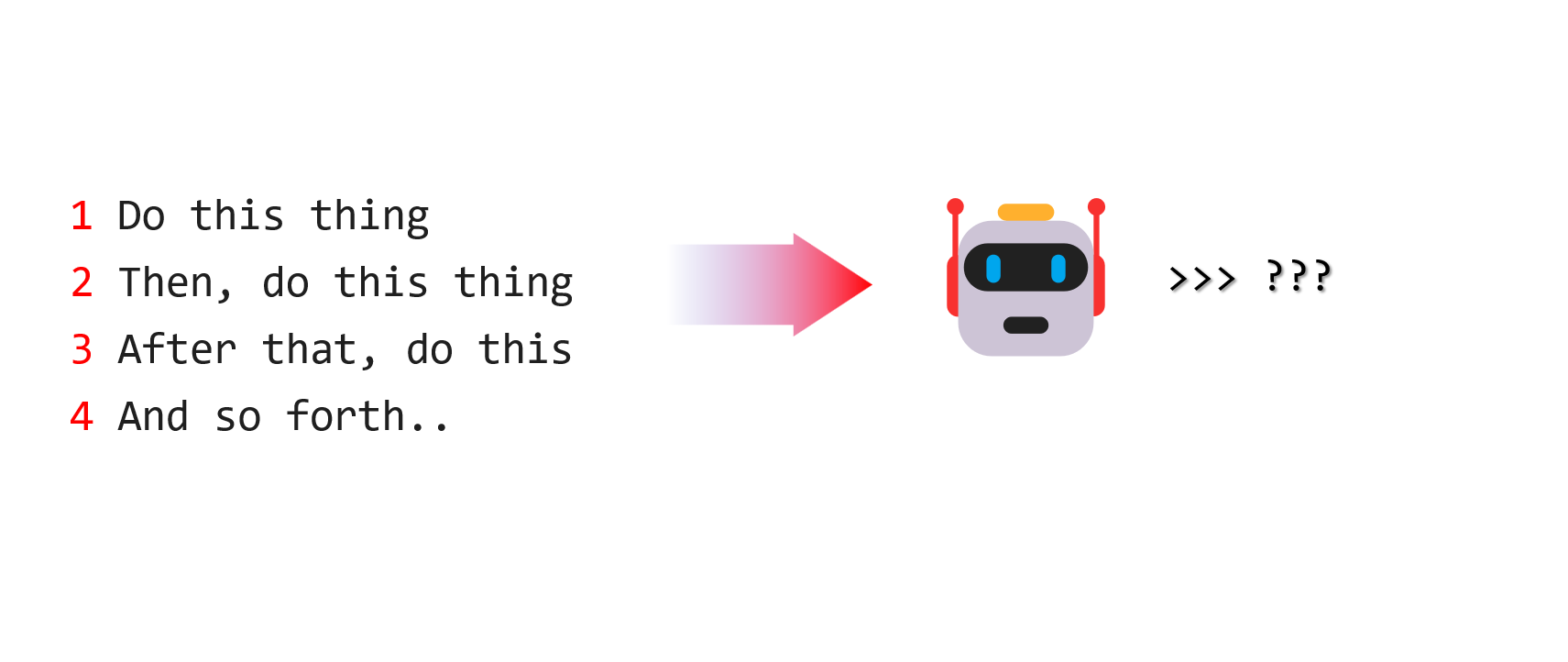
What is programming?
A program is a set of instructions that we can write and that a computer can execute.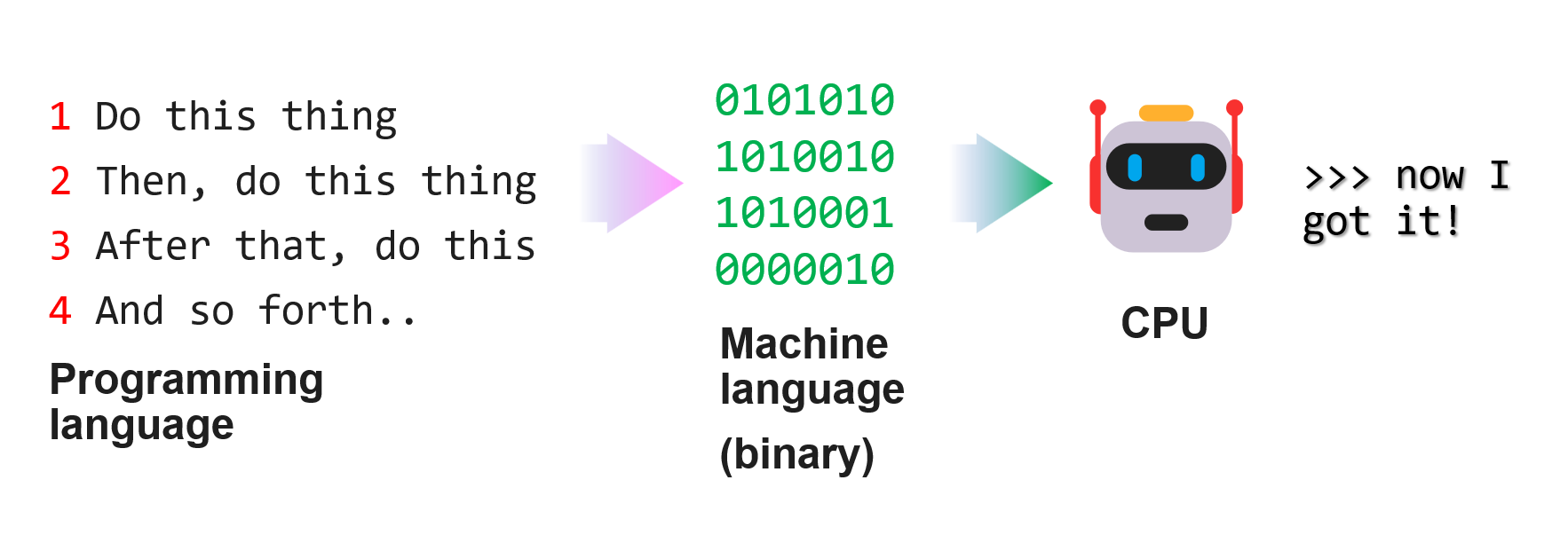
There are two ways to run a program:
A program can be either compiled into an executable and run at any time by a computer. In that case 1 compiled file can be executed multiple times.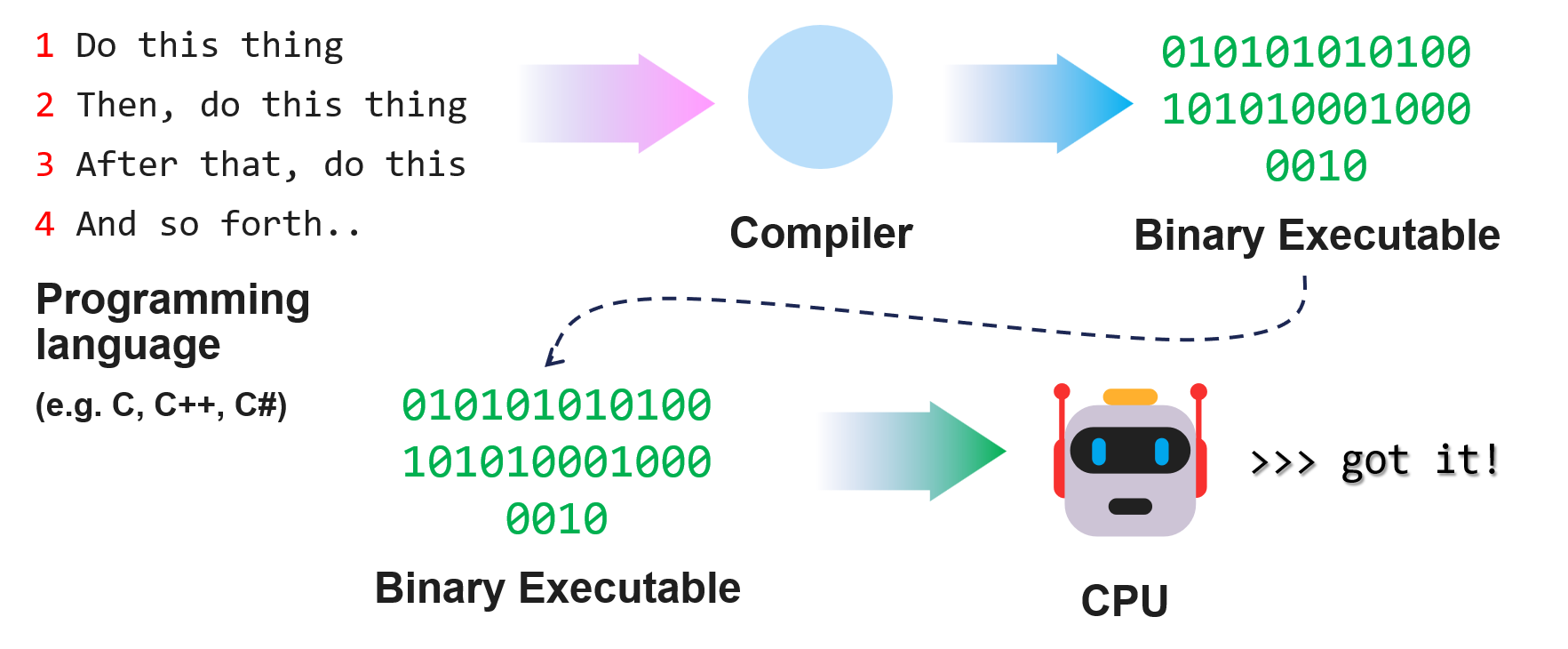
There are two ways to run a program:
A program can also be interpreted immediately. In that case 1 source file needs to be interpreted each time we want to run the program.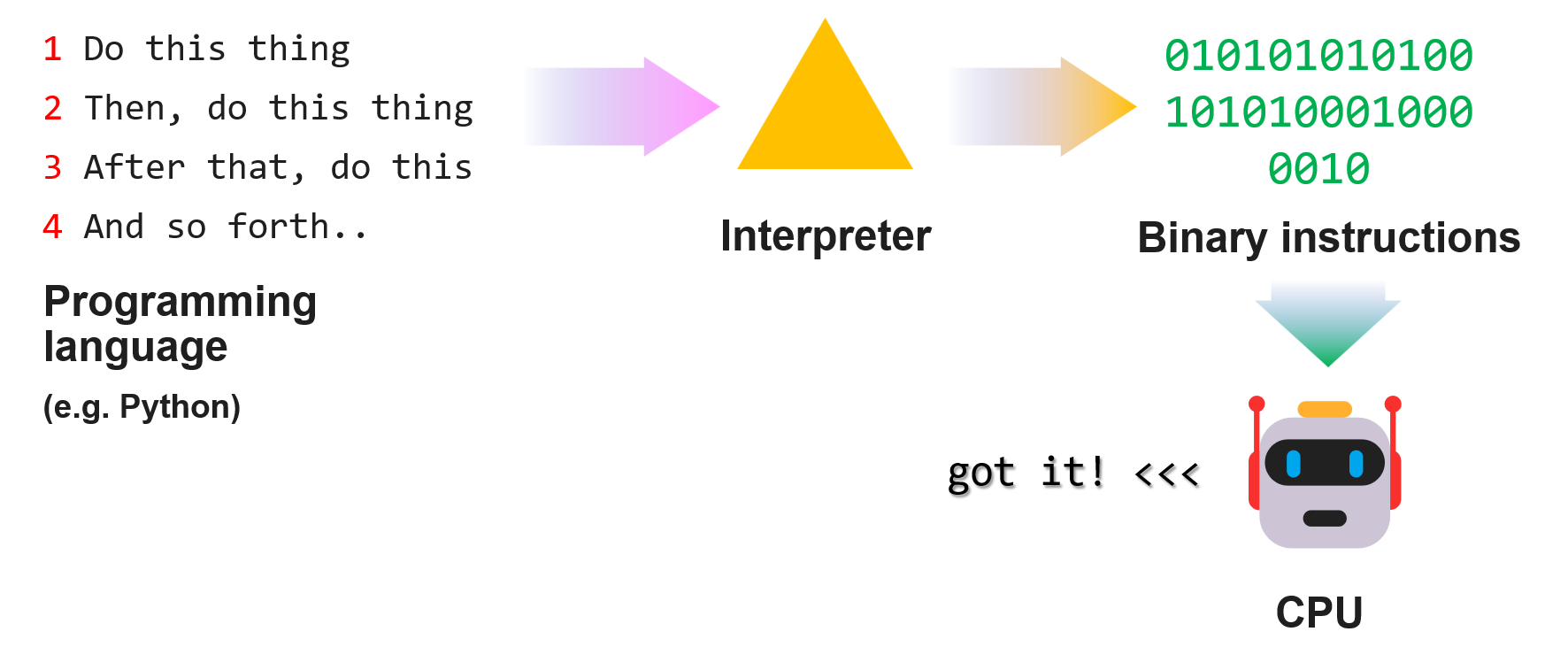
Python is an interpreted language
Why programming in Architecture?
Why programming in Architecture?

Parametric Design

Design Analysis

Digital Fabrication
Why programming in Architecture?
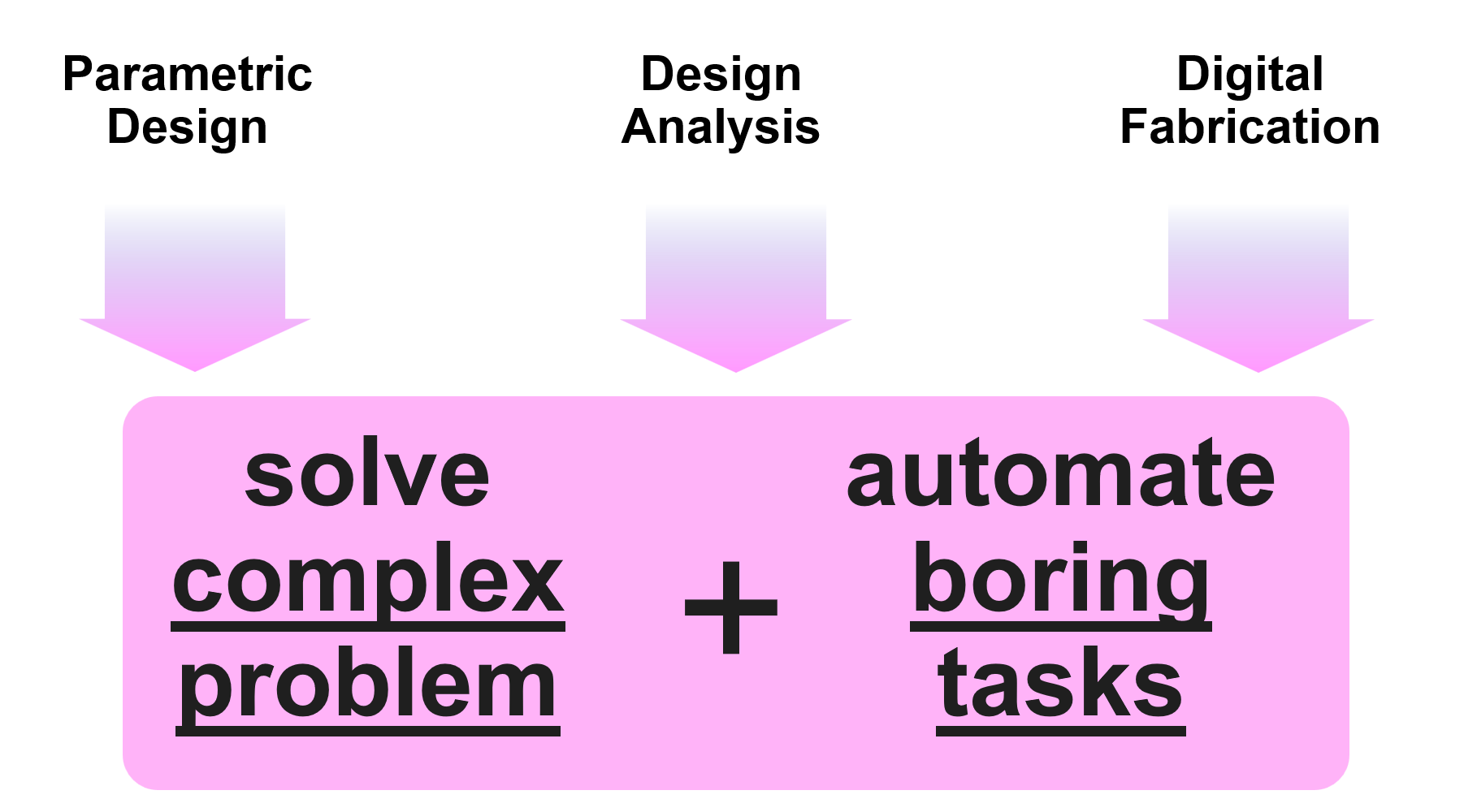
Where to Program? (IDE)
Where to Program? (IDE)
Developers use an IDE (Integrated Development Environment) to write and test their code.It is a text editor with additional features to help writing code.

Why use an IDE ?
#! python3
def hello_world(a: int) -> None:
print( a * "Hello, World!")
Why use an IDE ?
To get syntax highlighting:
#! python3
def hello_world(a: int) -> None:
print( a * "Hello, World!")
#! python3
def hello_world(a: int) -> None:
print( a * "Hello, World!")
Why use an IDE ?
To get intelliSense (code completion):
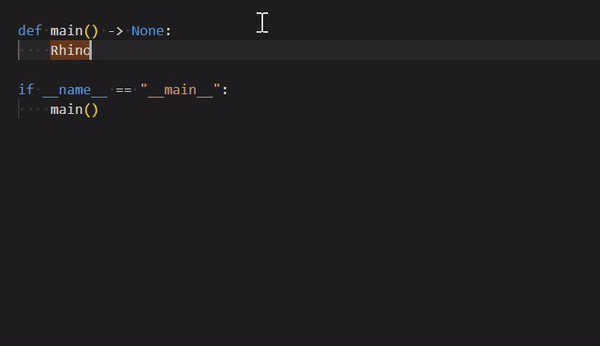
Why use an IDE ?
And many other features...
- Code formatting and linting
- Debugging tools
- AI-powered code suggestions
- Versionning integration
- Cool extensions and plugins
- ...
The Rhino IDE is relatively basic but offers the most important features.
Let's open Rhino's Python Editor
in Rhino, type _ScriptEditor in the command lineLet's open Rhino's Python Editor
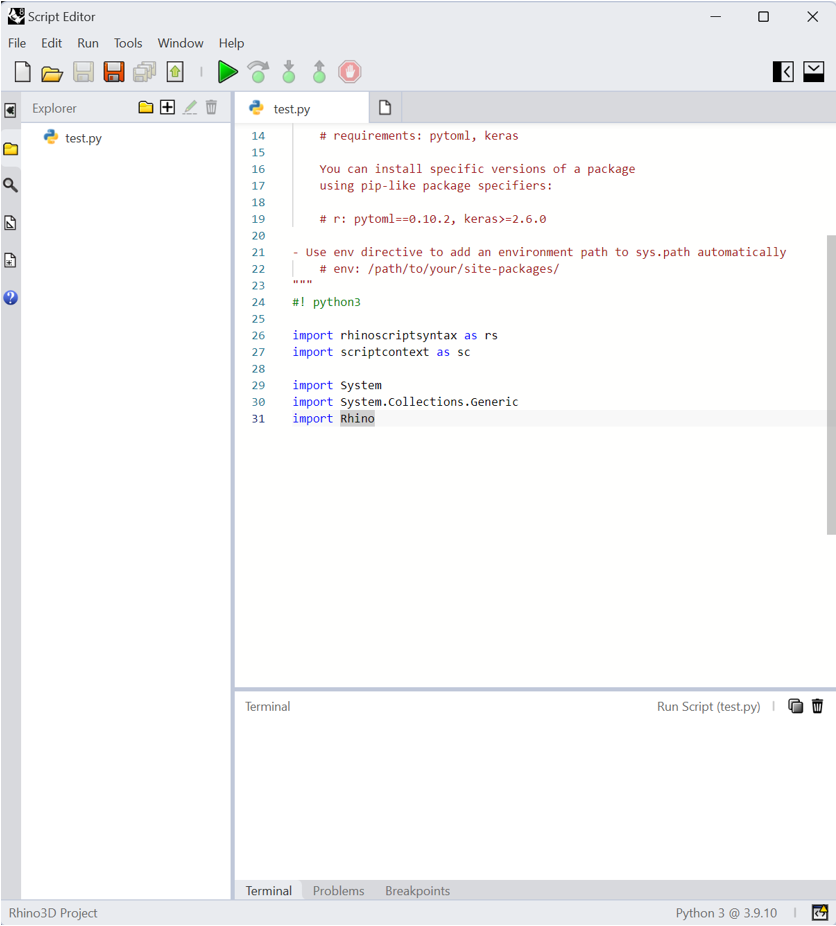
Let's open Rhino's Python Editor
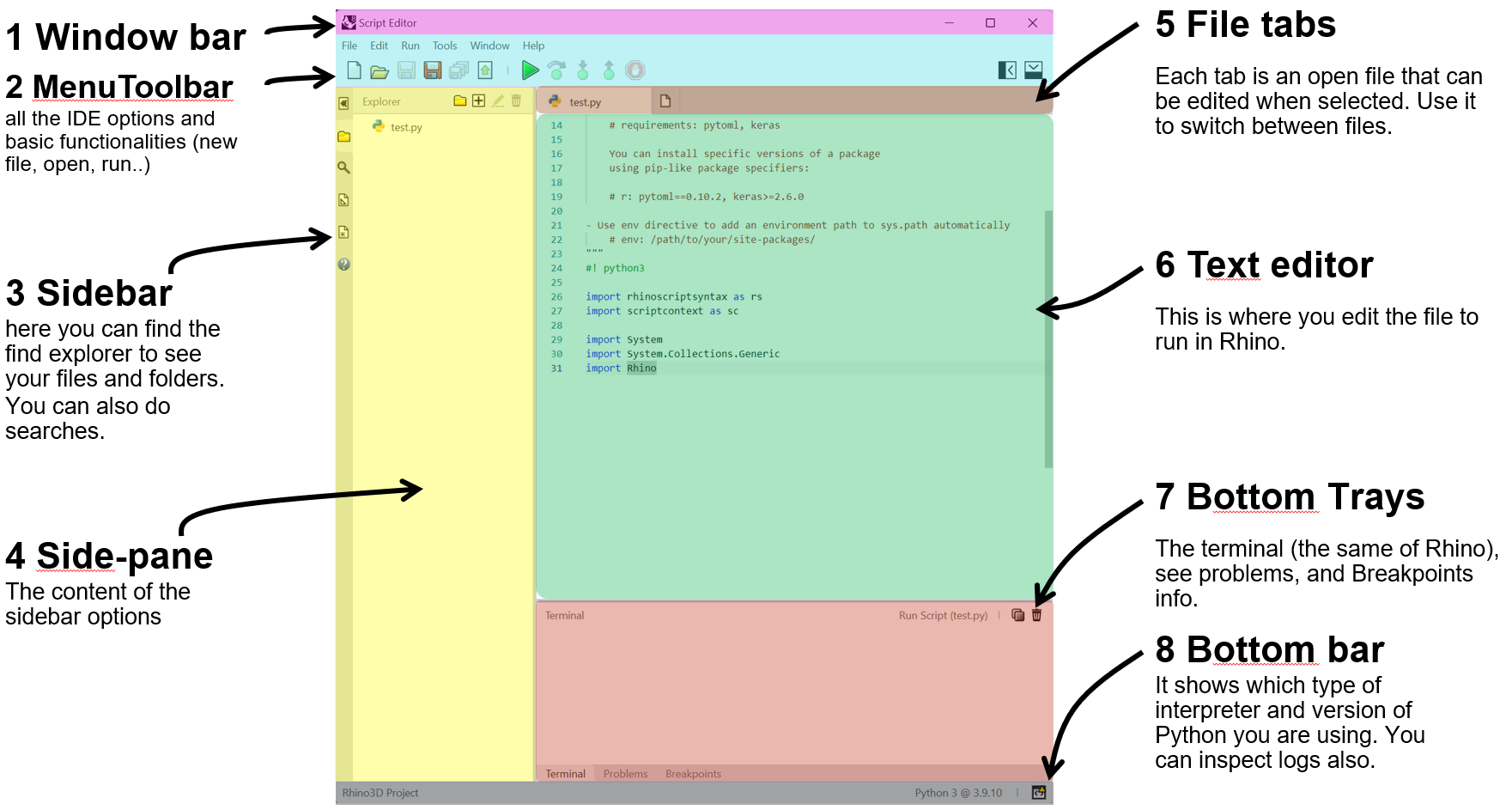
Let's open Rhino's Python Editor
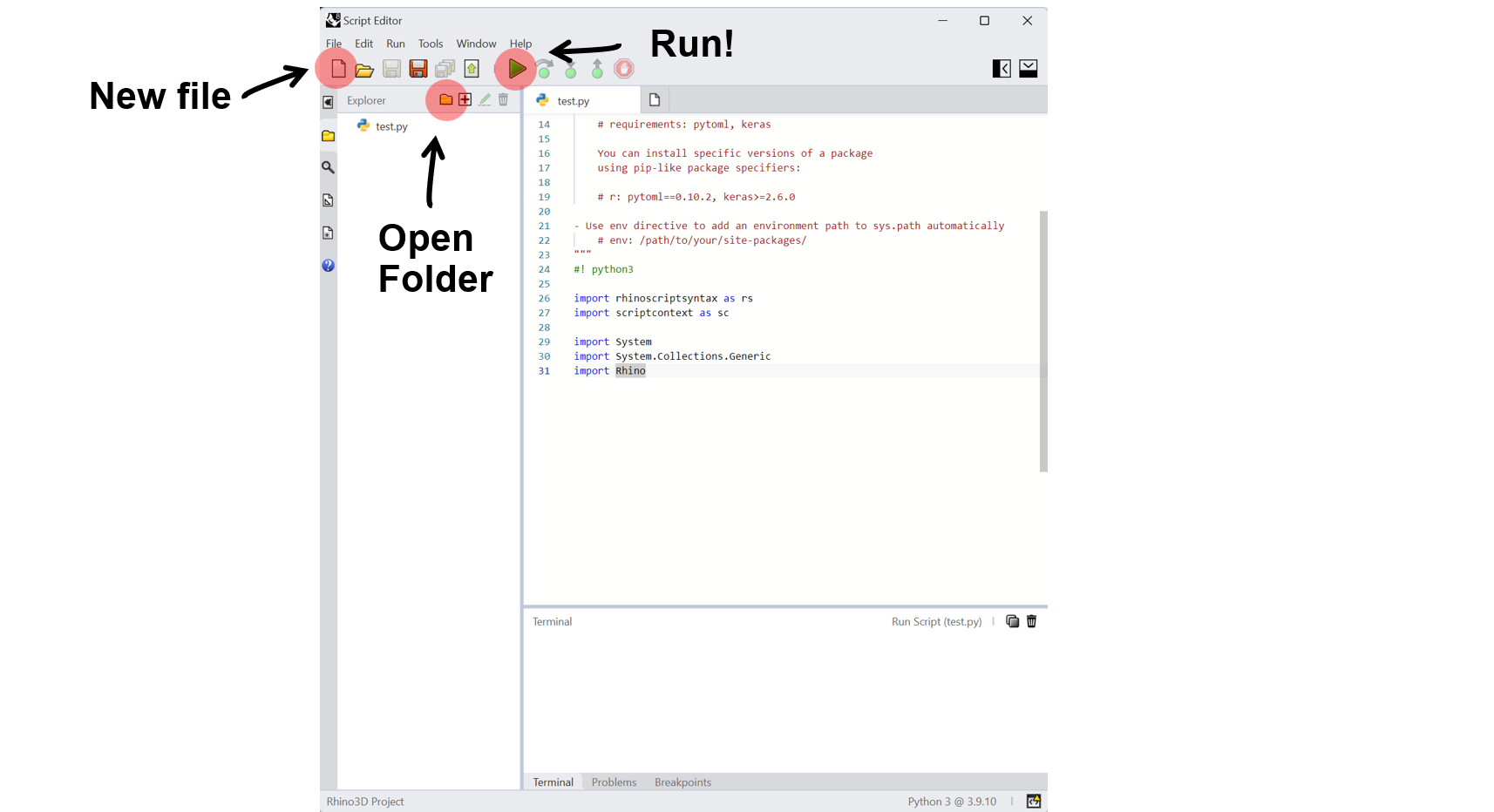
Excercise: Run your first script (10 min)
- Open Rhino's Python Editor
- From the website download the script in "00) Rhino / IDE"
- Open it in the editor, and run the script
And now, let's dive into Python
From Python website:
Python is an interpreted, object-oriented, high-level programming language with dynamic semantics. Its high-level built in data structures, combined with dynamic typing and dynamic binding, make it very attractive for Rapid Application Development, as well as for use as a scripting or glue language to connect existing components together. Python’s simple, easy to learn syntax emphasizes readability and therefore reduces the cost of program maintenance. Python supports modules and packages, which encourages program modularity and code reuse. The Python interpreter and the extensive standard library are available in source or binary form without charge for all major platforms, and can be freely distributed.From Python website:
Python is an interpreted, object-oriented, high-level programming language with dynamic semantics. Its high-level built in data structures, combined with dynamic typing and dynamic binding, make it very attractive for Rapid Application Development, as well as for use as a scripting or glue language to connect existing components together. Python’s simple, easy to learn syntax emphasizes readability and therefore reduces the cost of program maintenance. Python supports modules and packages, which encourages program modularity and code reuse. The Python interpreter and the extensive standard library are available in source or binary form without charge for all major platforms, and can be freely distributed.😬
Let's break it down:
- It is an interpreted language
- it can follow the object-oriented paradigm
- it is a high-level programming language
- it has dynamic typing and binding
- it has an extensive standard library
Which python in Rhino?
Rhino uses two versions of Python: IronPython (Python 2.7) and CPython (Python 3.X)
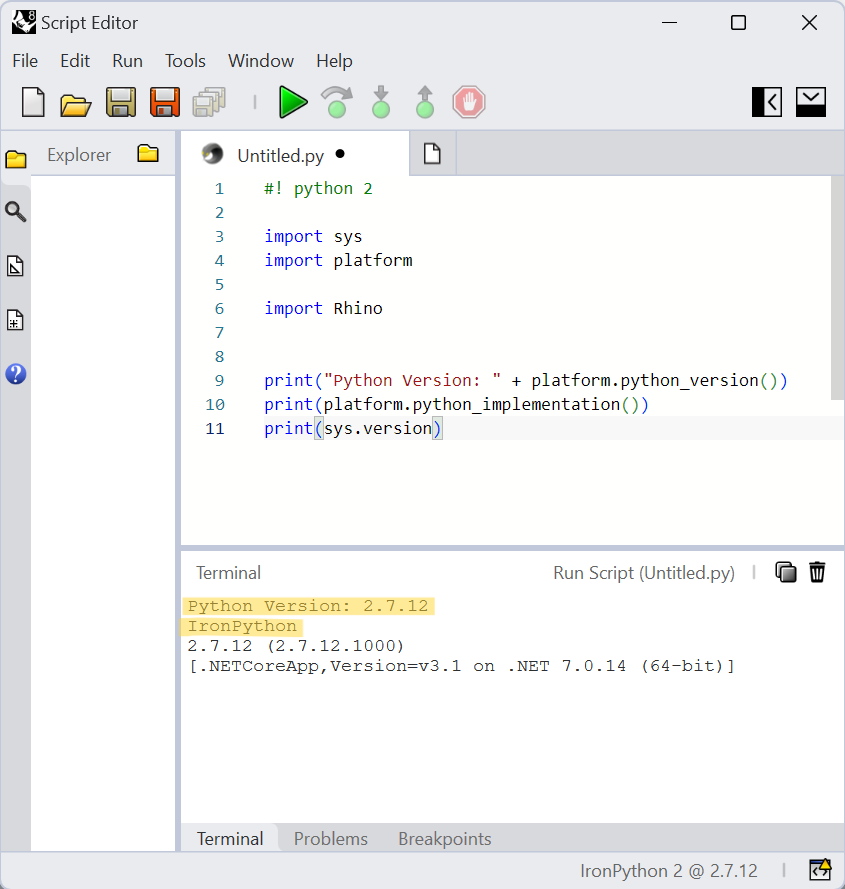
We will use CPython (currently Python 3.9) in this course.
Write and run your first Python script (10 min)
- Open Rhino's Python Editor
- Type the following code:
# My first Python script
my_variable = "Hello, World!"
print(my_variable)
If you see "Hello, World!" in the terminal, congrats! You just wrote and executed your first Python script! 🎉
Variables in Python 🐍
Variables in Python 🐍
A variable is like a box.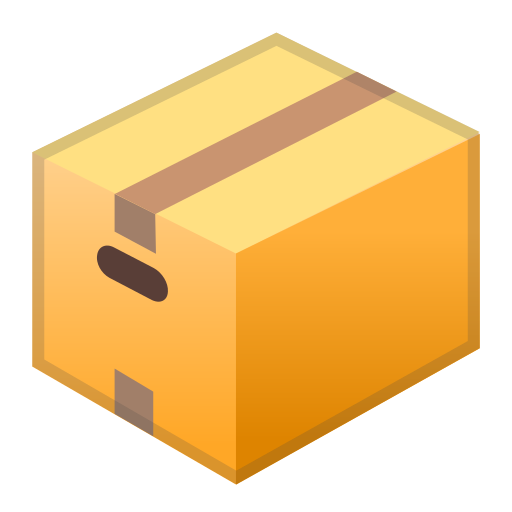
Variables in Python 🐍
A variable is like a box.In this box we can store data.


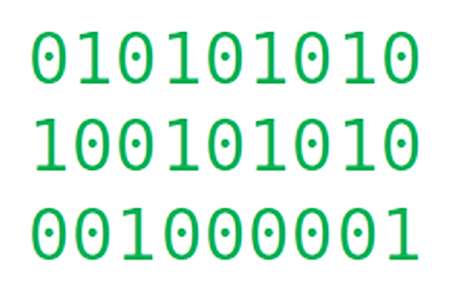
Variables in Python 🐍
A variable is like a box.In this box we can store data.


 boolean values
boolean values
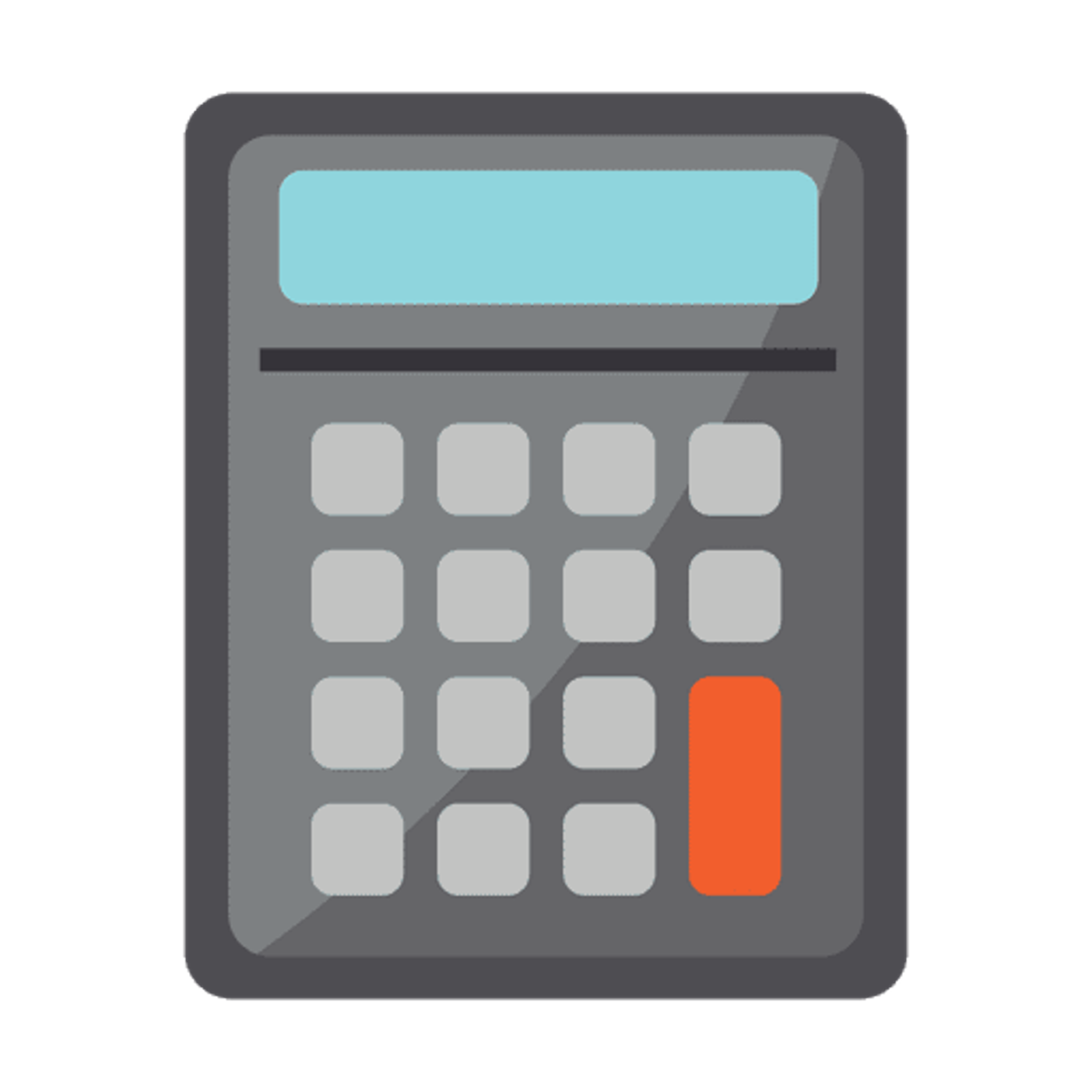 integer and float values
integer and float values
 string values
string values
And how can we create a variable in Python?
Let's look at the code we wrote in the previous exercice:
# My first Python script
my_variable = "Hello, World!"
print(my_variable)
And how can we create a variable in Python?
Let's look at the code we wrote in the previous exercice:
# My first Python script
my_variable = "Hello, World!"
print(my_variable)
In python, we always create a variable and immediately assign a value to it (There is no empty box).
And how can we create a variable in Python?
Let's look at the code we wrote in the previous exercice:
# My first Python script
my_variable = "Hello, World!"
my_other_variable = my_variable # What will be the value of my_other_variable?
print(my_other_variable)
In python, we always create a variable and immediately assign a value to it (There is no empty box).
Python syntax
Which rules to write code in Python?
# My first Python script
my_variable = "Hello, World!"
my-variable = "Hello, World!"
myVariable = "Hello, World!"
MyVariable = "Hello, World!"
my variable = "Hello, World!"
MYVARIABLE = "Hello, World!"
Myvariable = "Hello, World!"
What can we say about those variable names?
Which rules to write code in Python?
# My first Python script
my_variable = "Hello, World!" # Valid, snake_case
my-variable = "Hello, World!"
myVariable = "Hello, World!"
MyVariable = "Hello, World!"
my variable = "Hello, World!"
MYVARIABLE = "Hello, World!"
Myvariable = "Hello, World!"
What can we say about those variable names?
Which rules to write code in Python?
# My first Python script
my_variable = "Hello, World!" # Valid, snake_case
my-variable = "Hello, World!" # Invalid, algebra symbols are not allowed
myVariable = "Hello, World!"
MyVariable = "Hello, World!"
my variable = "Hello, World!"
MYVARIABLE = "Hello, World!"
Myvariable = "Hello, World!"
What can we say about those variable names?
Which rules to write code in Python?
# My first Python script
my_variable = "Hello, World!" # Valid, snake_case
my-variable = "Hello, World!" # Invalid, algebra symbols are not allowed
myVariable = "Hello, World!" # Valid, camelCase (not common in Python)
MyVariable = "Hello, World!"
my variable = "Hello, World!"
MYVARIABLE = "Hello, World!"
Myvariable = "Hello, World!"
What can we say about those variable names?
Which rules to write code in Python?
# My first Python script
my_variable = "Hello, World!" # Valid, snake_case
my-variable = "Hello, World!" # Invalid, algebra symbols are not allowed
myVariable = "Hello, World!" # Valid, camelCase (not common in Python)
MyVariable = "Hello, World!" # Valid, PascalCase (not common in Python)
my variable = "Hello, World!"
MYVARIABLE = "Hello, World!"
Myvariable = "Hello, World!"
What can we say about those variable names?
Which rules to write code in Python?
# My first Python script
my_variable = "Hello, World!" # Valid, snake_case
my-variable = "Hello, World!" # Invalid, algebra symbols are not allowed
myVariable = "Hello, World!" # Valid, camelCase (not common in Python)
MyVariable = "Hello, World!" # Valid, PascalCase (not common in Python)
my variable = "Hello, World!" # Invalid, spaces are not allowed
MYVARIABLE = "Hello, World!"
Myvariable = "Hello, World!"
What can we say about those variable names?
Which rules to write code in Python?
# My first Python script
my_variable = "Hello, World!" # Valid, snake_case
my-variable = "Hello, World!" # Invalid, algebra symbols are not allowed
myVariable = "Hello, World!" # Valid, camelCase (not common in Python)
MyVariable = "Hello, World!" # Valid, PascalCase (not common in Python)
my variable = "Hello, World!" # Invalid, spaces are not allowed
MYVARIABLE = "Hello, World!" # Valid, all uppercase, but reserved for constants
Myvariable = "Hello, World!"
What can we say about those variable names?
Which rules to write code in Python?
# My first Python script
my_variable = "Hello, World!" # Valid, snake_case
my-variable = "Hello, World!" # Invalid, algebra symbols are not allowed
myVariable = "Hello, World!" # Valid, camelCase (not common in Python)
MyVariable = "Hello, World!" # Valid, PascalCase (not common in Python)
my variable = "Hello, World!" # Invalid, spaces are not allowed
MYVARIABLE = "Hello, World!" # Valid, all uppercase, but reserved for constants
Myvariable = "Hello, World!" # Valid, but not following common conventions
What can we say about those variable names?
Comments in Python
Comments in Python
# This is a single line comment.
my_variable = "Hello, World!"
print(my_variable)
Comments in Python
"""
This is a multi-line comment.
It can span multiple lines and skip lines.
It is often used for code documentation (docstrings).
"""
my_variable = "Hello, World!"
print(my_variable)
Char and strings
Char and strings



Char and strings
A char is a single character (letter, number, symbol) enclosed in quotes.A string is a sequence of characters enclosed in quotes (" " or ' ').
For example:
my_string1 = 'Hello, World!'
my_string2 = "Hello, World!"
my_string3 = "It's a beautiful day!"
my_string4 = 'He said, "Hello!"'
Char and strings
We can retrieve a specific character from a string using indexing (starting at 0).
my_string = 'Hello, World!'
my_char = my_string[7] # 'W' or ' '?
Char and strings
We can retrieve a specific character from a string using indexing (starting at 0).
my_string = 'Hello, World!'
my_char = my_string[7] # 'W'!
Char and strings
We sum strings using the + operator (also called concatenation).
my_first_string = 'Hello, World!'
my_second_string = " How are you?"
my_summed_string = my_first_string + my_second_string
print(my_summed_string)
Char and strings
We sum strings using the + operator (also called concatenation).
my_first_string = 'Hello, World!'
my_second_string = " How are you?"
my_summed_string = my_first_string + my_second_string
print(my_summed_string) # Hello, World! How are you?
Excercise: Variables and strings (10 min)
- Open Rhino's Python Editor
- From the website, go to the "String" page and download the exercice 01 and exercice 02 at the bottom of the page
- Open it in the editor, and run the script
- Try to understand what each line of code does
- Modify the code to print your own message
Numbers
Numbers
We can make the distinction between two types of numbers: integers and floats.- Integers are whole numbers (positive or negative) without a decimal point. Examples: -3, 0, 25432372
- Floats (or floating-point numbers) are numbers that have a decimal point. Examples: -3.14, 0.0, 2.0
Numbers
# Examples of integers and floats
my_integer = 10
my_float = 3.14
print("Integer:", my_integer)
print("Float:", my_float)
Numbers
# Examples of integers and floats
my_integer = 10
my_float = 10.0
print("Integer:", my_integer)
print("Float:", my_float)
Numbers
# Examples of integers and floats
my_integer = 10
my_float = 10.0 # what is really stored in memory: 01000001001000000000000000000000
print("Integer:", my_integer)
print("Float:", my_float)
The decimal 10.0 is stored in memory as 32 bits: 01000001001000000000000000000000.
Numbers
# Examples of integers and floats
my_integer = 10
my_float = 10.0 # what is really stored in memory: 01000001001000000000000000000000
print("Integer:", my_integer)
print("Float:", my_float)
with the same amount of memory, we can store a much larger integers than floats.
Number operators
a = 10 + 3 # Addition,
b = 10 - 3 # Subtraction,
c = 10 * 3 # Multiplication,
d = 10 / 3 # Division (float),
e = 10 // 3 # Division (integer), result is 3
f = 10 % 3 # Modulus (remainder), result is 1
g = 10 ** 3 # Exponent, result is 1000
Excercise: numbers (10 min)
- Open Rhino's Python Editor
- From the website, go to the "int-float" page and download the exercice 01 and exercice 02 at the bottom of the page
- Open it in the editor, and run the script
- Solve the exercices
Booleans
Booleans
A boolean is a data type that can have one of two possible values: True or False.
Booleans
Typically variables that store boolean values start with "is" or "has":
is_processed = True
has_data = False
print("Is processed:", is_processed)
print("Has data:", has_data)
Booleans and comparison operators
boolean operators are operators that return a boolean value:
a = 10
b = 3
is_equal = (a == b) # False
is_not_equal = (a != b) # True
is_greater = (a > b) # True
is_less = (a < b) # False
is_greater_equal = (a >= b) # True
is_less_equal = (a <= b) # False
Control flow
Control flow
Control flow consists in making decisions in our code based on certain conditions:
a = 10
b = 3
if CONDITION:
# Do something if CONDITION is True
else:
# Do something else if CONDITION is False
while CONDITION:
# Do something while CONDITION is True
Control flow
Control flow consists in making decisions in our code based on certain conditions:
a = 10
b = 3
if a > b:
print("a is greater than b") # This line is executed
elif a < b:
print("a is less than b") # This line is NOT executed
else:
print("a is equal to b") # This line is NOT executed
Control flow
The conditions can be combined using logical operators:- and: True if both conditions are True
- or: True if at least one condition is True
- not: Inverts the boolean value of a condition
a = 10
if a > 0 and a % 2 == 0:
print("Pop-quiz, what would you print here")
elif a < 0 or a % 2 != 0:
print("Pop-quiz, what would you print here")
elif a not in [1, 3, 5, 7, 9]: # PS: this is a list, we will see it next week
print("Pop-quiz, what would you print here")
Control flow
The conditions can be combined using logical operators:- and: True if both conditions are True
- or: True if at least one condition is True
- not: Inverts the boolean value of a condition
a = 10
if a > 0 and a % 2 == 0:
print("a is a positive even number")
elif a < 0 or a % 2 != 0:
print("a is either negative or odd")
elif a not in [1, 3, 5, 7, 9]: # PS: this is a list, we will see it next week
print("a is not a single-digit odd number")
Control flow
a = 10
while a > 0:
print(a)
a -= 1 # Decrease a by 1
print("What would you print here?")
Excercise: Control flow (10 min)
- Open Rhino's Python Editor
- From the website, go to the "control flow" page and download the exercice 01 and exercice 02 at the bottom of the page
- Open it in the editor, and run the script
- Solve the exercices
Enough for today!

But for next week...
Assignment for next week (due next week)
- Finish the exercices you didn't manage to finish during the class -> exercice yourself as much as possible, as for any language.
- The two parts of the assignment are on moodle, due for next Thursday 13:00
